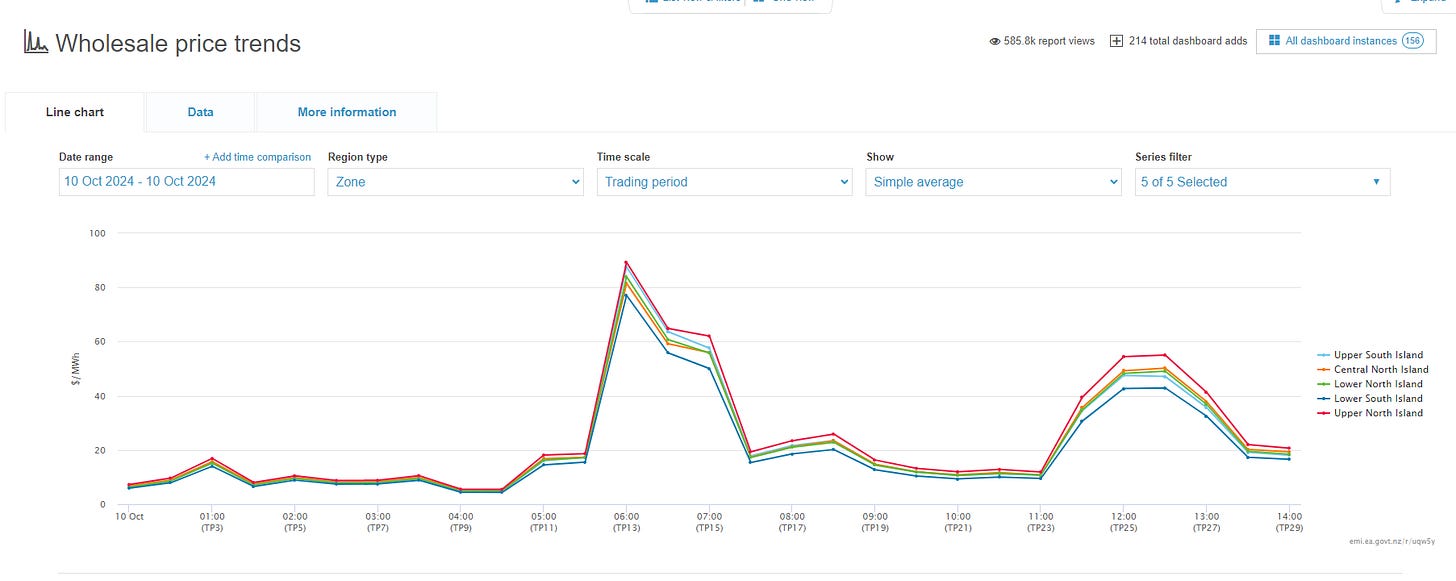I applaud this Governments attempts to remove red tape and get things moving.
For those who think in thermodynamic terms you may recall my post on Lotka’s wheel. Trying to remove red tape and reduce bureaucracy is akin to trying to make the wheel smaller and spin slower. It’s not an easy task.
One of their flagship initiatives is the fast-track bill, intended to remove some of the hurdles associated with the RMA (Resource Management Act).
The list of fast-track projects announced last week features 22 “renewable” energy projects. In a press release infrastructure minister Chris Bishop had this to say.
The 22 renewable electricity projects will help electrify the New Zealand economy, boost energy security and help New Zealand address its climate change goals. New Zealand has abundant renewable energy resources but the planning system puts barrier after barrier in the way of taking advantage of them. Collectively the projects will contribute an additional 3 gigawatts of generation capacity, if all consented. By comparison, Auckland’s historic peak demand is about 2 gigawatts.
Despite my strong support for the intent of the bill, I do not hold much hope that the fast-tracking process will have the intended positive impact on our energy security or prices.
For a start 3 GW of additional capacity is an eye wateringly big number when you consider that on any given day our demand is 5-7 GW.
This is of course somewhat disingenuous from Minister Bishop as he surely understands capacity factor, and that onshore wind in NZ has a capacity factor of at best 40% and solar is less than 15%.
As a side note, I have observed in some other countries that renewables are being represented by MWp (Megawatts Peak) which is a far more honest representation of intermittency.
The second issue is that when the lakes are reasonably full and the weather is reasonably mild, which is a large part of the year, our prices aren’t too bad. Not great, but also not good enough to make large scale renewables viable.
It is for these reasons that I expect very few of the 22 fast track projects to be delivered. The market conditions are unlikely to be supportive of these projects:
In the same way that scarcity sets the price on the way up, abundance sets the price on the way down. Hydro is by far the cheapest power in NZ and will still be profitable on a windy day, but vast numbers of wind farms across the country will not.
Solar is near saturation already and every new solar farm further suppresses the prices on a sunny summer’s day, which is peak solar generating conditions, but also the lowest electricity demand.
The New Zealand Wind Energy Association has this to say on the subject.
Once a developer has thoroughly investigated a potential wind farm site, they may apply for resource consent.
Not all projects with a consent will be built. Many consented projects are currently on hold as the developer waits for market conditions and demand for renewable electricity to increase to make the wind farm commercially viable.
This is a list of wind projects already consented, or already in the process of consenting, but not being built.
This list represents half the Governments promised 3 GW, but very little of it is going to be delivered any time soon. This is point in case of why I forecast the fast-track bill will not deliver much, if any, relief to our limping electricity sector.
So then why are these businesses applying for consent when these projects are not going to be built?
To add them to their portfolio of future developments which they hope will be good for their share prices.
In the event that New Zealanders are crazy enough to elect another Labor / Greens government that screws the market scrum with subsidies for renewables, like contracts for difference, then the projects suddenly become commercially viable and are ready to go.
Thanks for reading folks and have a great evening!








Under the current market configuration, generators are only paid to generate. To better utilise hydro’s ability to store energy, maybe there should be a payment mechanism to incentivise storage under some conditions. The incentive might vary with lake levels, time of year, weather outlook etc.